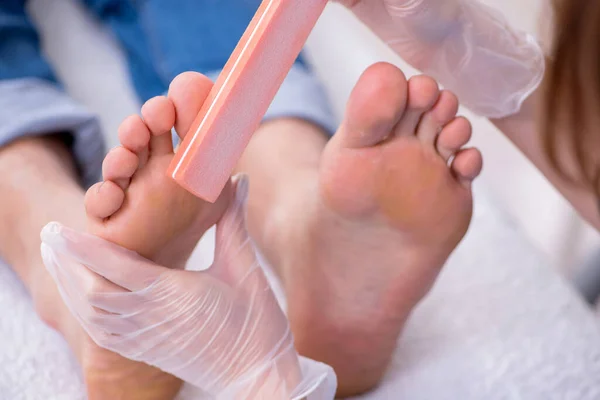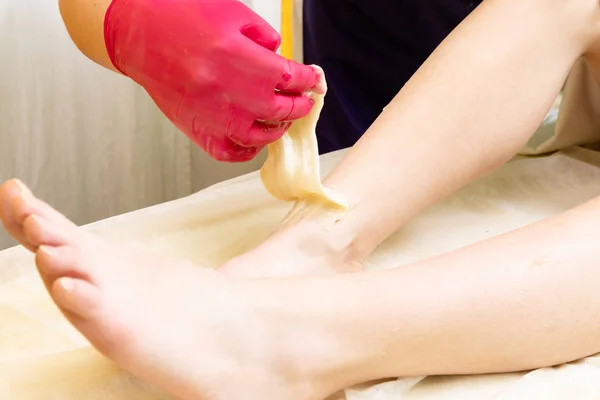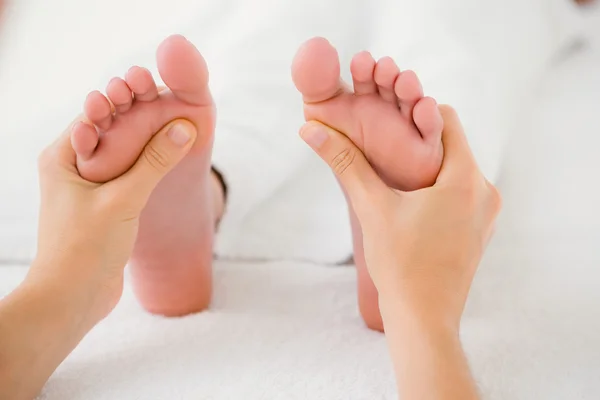Discover effective ways on how to remove dead skin from feet. Explore DIY methods and expert tips to achieve smoother and healthier feet. Say goodbye to rough, dry skin with our step-by-step guide for removing dead skin from your feet at home.
Step into a world where the care and pampering of your feet take center stage a realm where the journey to silky, smooth soles begins. In the hustle and bustle of our daily lives, our feet bear the brunt of our adventures, often left neglected and yearning for attention. But fear not, for the secret to unveiling the soft, rejuvenated skin beneath lies in the art of removing dead skin from your feet.
Imagine a transformative experience where every step feels like a gentle caress, and your feet become a canvas of pure indulgence. Bid farewell to calloused patches and embrace the allure of velvety soles as we embark on a foot revitalizing odyssey together. Let the enchantment of revitalization sweep over you, as we delve into the magical world of restoring your feet to their pristine glory.

Table of Contents
ToggleHow To Remove Dead Skin From Feet
Start of the Paragraph
To remove dead skin from your feet and reveal smoother skin, start by soaking your feet in warm, soapy water for about 15 minutes. This helps to soften the dead skin, making it easier to exfoliate.
Exfoliation Techniques
Once your feet are adequately soaked, use a pumice stone or foot file to gently scrub away the dead skin. Focus on areas with thicker skin, such as the heels and sides of your feet. This process helps eliminate rough patches and promotes healthier skin regeneration.
DIY Foot Scrubs
Consider creating your own foot scrub using natural ingredients like sugar, olive oil, or honey. These ingredients act as excellent exfoliants and moisturizers, leaving your feet feeling refreshed and revitalized. Apply the scrub in circular motions for maximum effectiveness.
Moisturize for Lasting Softness
After exfoliation, it’s crucial to moisturize your feet. Choose a rich foot cream or moisturizer containing ingredients like shea butter or glycerin to lock in moisture. Regular moisturizing prevents the recurrence of dead skin and keeps your feet feeling soft.
Gathering Supplies
When embarking on a rejuvenating foot care routine, the first step is assembling the essential supplies. Begin with a basin of warm water, a fundamental element that primes your feet for relaxation.
Elevate the experience by incorporating Epsom salt, a renowned remedy for soothing tired muscles and relieving stress. For an aromatic touch, essential oils can be a delightful addition, providing a spa-like ambiance during your self-care session.
Next, focus on exfoliation tools to revitalize your feet. A pumice stone and foot file are indispensable for removing rough patches and calluses, promoting a smoother texture. Enhance the exfoliation process with a specially formulated scrub, indulging your feet in a thorough cleansing that leaves them feeling invigorated.
Towels play a pivotal role in the foot care ritual, serving as practical aids in drying and maintaining cleanliness throughout the process. Choose soft and absorbent towels to ensure a comfortable experience.
Finally, seal the deal with a nourishing moisturizer. Select a rich cream or lotion to hydrate your feet, locking in the benefits of the foot soak and exfoliation. As you gather these supplies, envision the pampering journey ahead, and embrace the anticipation of giving your feet the care they truly deserve.
Preparing the Feet
Soaking the Feet
Invigorate the Experience
Begin by filling a basin with comfortably warm water, creating an inviting environment for your feet.
Enhance Relaxation
Elevate your foot-soaking ritual by adding Epsom salt, a renowned relaxation agent that aids in soothing tired muscles.
Aromatherapy Upgrade
For an extra touch, incorporate essential oils into the mix, allowing their aromatic essence to transform the soak into a sensory indulgence.
Immerse in Tranquility
Immerse your feet in this rejuvenating concoction, promoting a sense of calm and well-being.
Optimal Duration
Let the stresses of the day melt away as you soak your feet for a rejuvenating 10-15 minutes, giving your feet the pampering they deserve.

Exfoliating Dead Skin
In the pursuit of smoother, healthier feet, exfoliating dead skin is a crucial step that unveils the true beauty of your skin. One effective method involves the use of a pumice stone a natural exfoliant. Begin by wetting the stone to enhance its effectiveness, then gently rub it over areas with dead skin. Concentrate on notoriously rough spots like heels, sides of feet, and calloused areas for optimal results.
Alternatively, a foot file can be your go-to tool for refining your foot care routine. Select either the coarse or fine side based on your skin thickness. Employ gentle, circular motions to file away dead skin, paying special attention to rough patches and calluses. This method ensures precision in targeting specific areas that need extra care.
For a spa-like indulgence, consider incorporating an exfoliating scrub into your regimen. Whether opting for a commercial product or creating a DIY scrub at home, the key lies in massaging the scrub in circular motions. This therapeutic process revitalizes your feet, focusing on stubborn dead skin in areas that require special attention.
Rinsing and Drying
When it comes to foot care, V. Rinsing and Drying play a crucial role in maintaining optimal hygiene. Start by gently rinsing your feet with clean water, ensuring thorough cleansing.
This simple yet essential step removes impurities and refreshes your skin. Next, delicately pat your feet dry using a soft towel, avoiding harsh rubbing to prevent irritation. Employing this routine not only promotes cleanliness but also contributes to overall foot health.
Moisturizing
In the realm of foot care, the sixth step, “VI. Moisturizing,” is a vital component for maintaining soft, supple skin. Begin by generously applying a luxurious foot cream or moisturizer, ensuring you cover every inch of your feet. Concentrate on the heels and other dry areas, addressing the skin’s specific needs.
Opt for products enriched with nourishing ingredients such as shea butter or glycerin, recognized for their hydrating prowess. These components are lauded for their ability to replenish moisture, leaving your feet feeling silky smooth and revitalized. Incorporate this moisturizing routine into your daily self-care regimen, and witness the transformation as your feet embrace the pampering they truly deserve.
Additional Tips
In cultivating healthy foot habits, prioritizing the regularity of your foot care routine is paramount. Consistent attention to your feet ensures that you address issues promptly and maintain overall foot well-being. Embrace the practice of inspecting your feet daily, using keywords like “daily foot check” and “routine foot care” to emphasize the importance of habitual care.
Equally crucial is the choice of footwear opt for comfortable and breathable shoes. Incorporate phrases like “supportive footwear” and “breathable shoe options” to underscore the significance of selecting shoes that promote foot comfort. This will not only prevent discomfort but also contribute to the long-term health of your feet.
To ward off potential dead skin buildup, keep your feet dry through various means. Employ terms such as “moisture-wicking socks” and “ventilated footwear” to highlight the importance of maintaining dry conditions. This preventive measure serves as a barrier against issues like calluses and fungal infections, showcasing the proactive approach to foot health.

FAQs
Why is it important to remove dead skin from feet?
Removing dead skin from feet helps maintain healthy and smooth skin, prevents infections, and promotes better foot hygiene. It also contributes to overall foot comfort and appearance.
What causes dead skin on the feet?
Dead skin on the feet can result from factors such as dryness, friction, inadequate foot care, fungal infections, or medical conditions. Lack of exfoliation and moisturization can contribute to the buildup of dead skin.
How often should I remove dead skin from my feet?
It’s recommended to exfoliate and remove dead skin from your feet at least once a week. However, the frequency may vary based on individual needs, skin types, and environmental factors.
What are effective home remedies for removing dead skin from feet?
Popular home remedies include soaking feet in warm water, using a pumice stone, applying exfoliating scrubs, or creating a foot mask with natural ingredients like lemon, honey, or yogurt.
Can I use a razor to remove dead skin from my feet?
It is not recommended to use a razor for dead skin removal, as it may lead to cuts, infections, or other injuries. Safer alternatives include pumice stones, foot files, or exfoliating scrubs.
How can I prevent dead skin from building up on my feet?
To prevent dead skin buildup, maintain proper foot hygiene, moisturize regularly, wear breathable shoes, and exfoliate your feet consistently. Additionally, stay hydrated and address any underlying health issues.
Is it normal for feet to peel after removing dead skin?
Yes, mild peeling can be normal after dead skin removal, revealing fresh skin underneath. However, excessive peeling, redness, or pain should be monitored, and professional advice sought if necessary.
Are there specific products for dead skin removal from feet?
Yes, there are various foot scrubs, creams, and exfoliating tools available in the market specifically designed for dead skin removal. Look for products containing ingredients like salicylic acid or alpha hydroxy acids for effective exfoliation.
Can I use a foot peel mask to remove dead skin?
Foot peel masks can be effective in removing dead skin. Follow the instructions on the product carefully, and be patient as the peeling process may take a few days to occur.
When should I seek professional help for dead skin on my feet?
If home remedies prove ineffective, or if you experience persistent issues such as severe dryness, cracks, or infections, it’s advisable to consult with a healthcare professional or a podiatrist for personalized guidance and treatment.
Conclusion
In conclusion, maintaining healthy and well-cared-for feet is essential for overall well-being, and effectively removing dead skin is a crucial aspect of foot care. By following the proper steps and incorporating regular exfoliation into your routine, you can enjoy softer, smoother, and more comfortable feet.
Whether through natural remedies, store bought products, or professional treatments, finding the method that works best for you is key. Remember, consistent attention to foot care not only promotes physical comfort but also contributes to a sense of self-care and overall confidence. So, take the time to pamper your feet, and they will thank you with improved health and a revitalized appearance.

